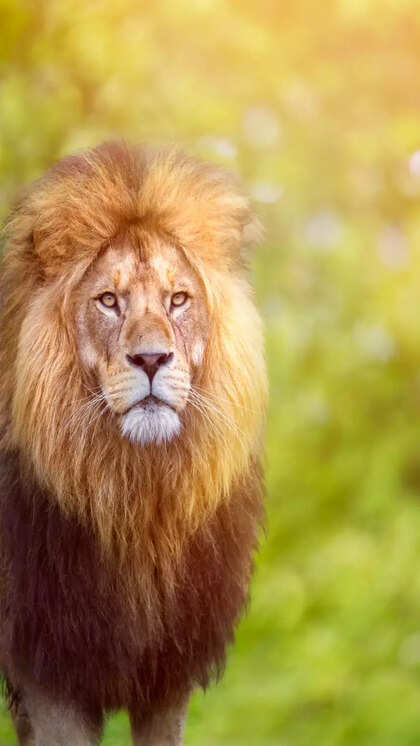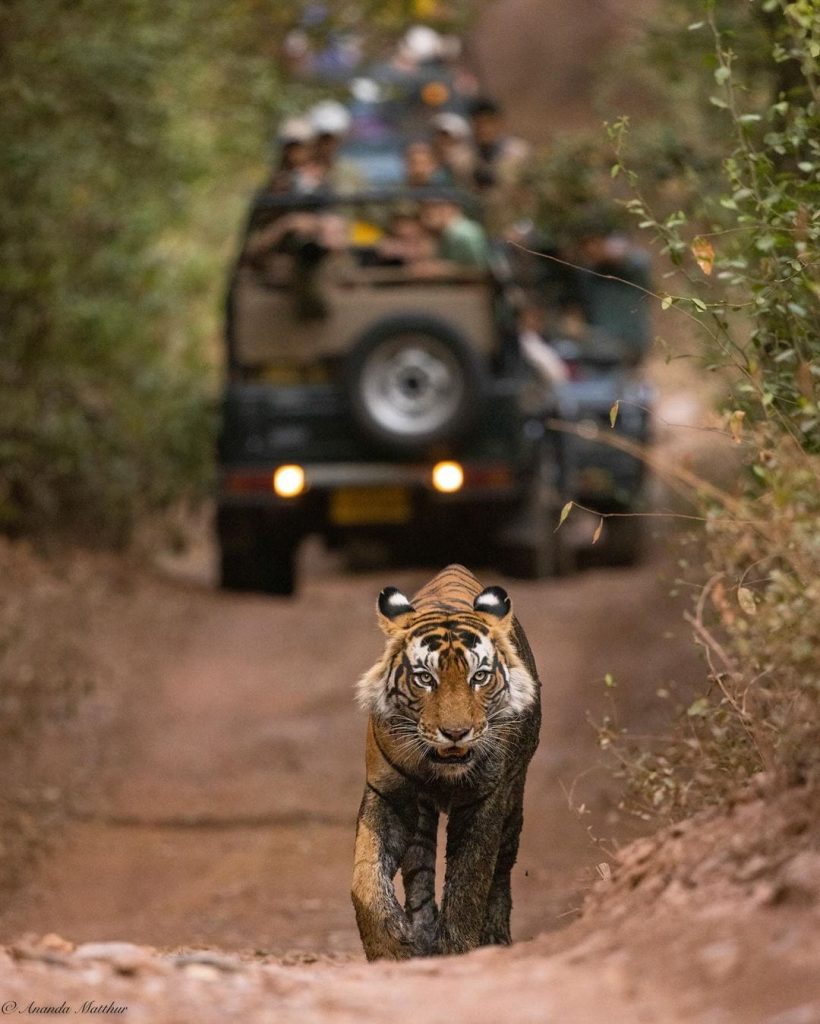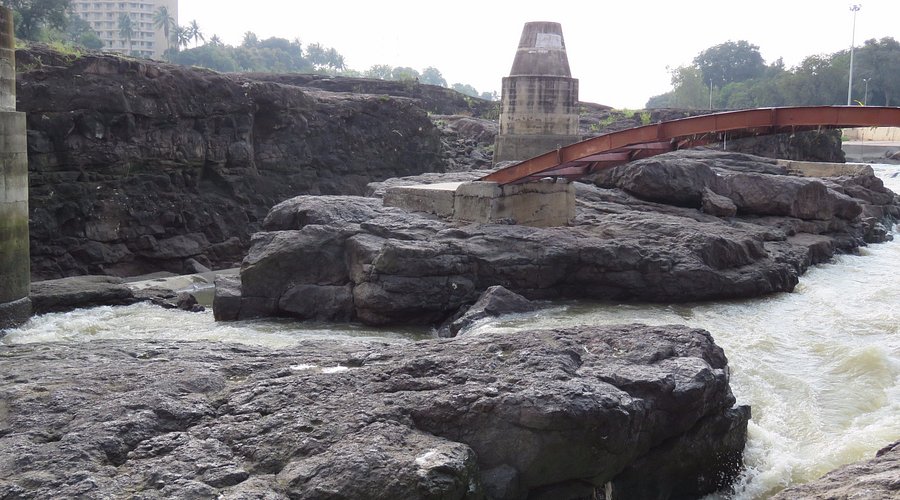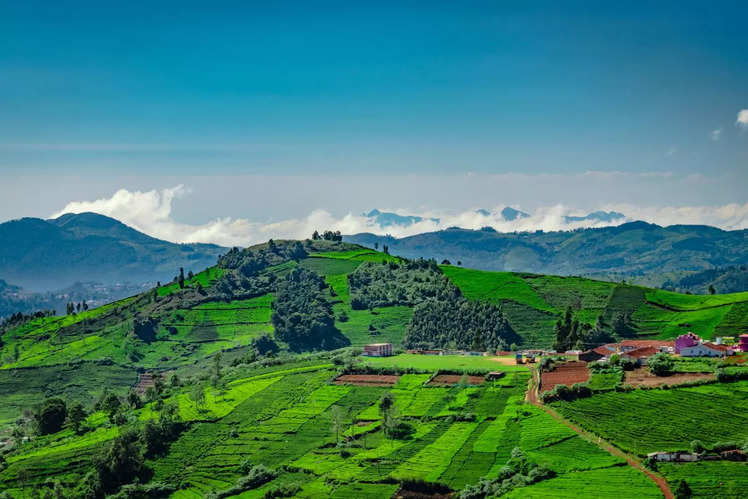Asia is home to incredible wildlife safari destinations. Experience exotic animals and breathtaking landscapes.
Imagine exploring Asia’s diverse terrains, where every safari promises a unique adventure. From dense jungles to sprawling savannahs, Asia offers wildlife enthusiasts an unparalleled experience. Whether you’re seeking the majestic tigers of India or the elusive snow leopards of Central Asia, the continent’s rich biodiversity is sure to amaze you.
Wildlife safaris in Asia are not just about spotting animals; they immerse you in nature’s wonders, providing a deeper appreciation for conservation. Each destination tells a story of nature, culture, and wildlife coexisting harmoniously. Get ready to embark on unforgettable journeys, where every moment is a discovery. Welcome to the ultimate guide to Asia’s wildlife safari destinations.
Top Wildlife Safari Parks
Asia is a treasure trove of diverse wildlife safari parks. These parks offer unique experiences with stunning landscapes and fascinating wildlife. Explore some of the best destinations for an unforgettable safari adventure.
Best Locations
Ranthambore National Park in India is famous for Bengal tigers. It features ancient ruins and lush forests. You can spot tigers, leopards, and various deer species.
Chitwan National Park in Nepal is home to one-horned rhinos. This park also hosts Bengal tigers and many bird species. The lush jungles and rivers provide a unique safari experience.
Borneo’s Sepilok Orangutan Rehabilitation Centre in Malaysia is a must-visit. Here, you can see orangutans in their natural habitat. The center also supports other wildlife rehabilitation efforts.
Unique Features
Ranthambore National Park offers a mix of history and nature. The park contains several ancient ruins, including a fort. These ruins add a historical touch to the safari experience.
Chitwan National Park offers river safaris for a different perspective. You can explore the park by canoe or raft. This allows for close encounters with aquatic wildlife.
The Sepilok Orangutan Rehabilitation Centre focuses on conservation. Visitors can learn about efforts to save endangered species. The center provides educational tours and volunteer opportunities.

Credit: www.bookallsafaris.com
India’s Tiger Reserves
India’s Tiger Reserves offer a unique opportunity to witness majestic tigers in their natural habitat. These protected areas are home to a diverse range of wildlife, but the Bengal tiger remains the star attraction. Two of the most famous tiger reserves are Ranthambore National Park and Bandhavgarh National Park. These parks provide excellent safari experiences for wildlife enthusiasts and photographers alike.
Ranthambore National Park
Ranthambore National Park is located in Rajasthan. It is one of the largest and most renowned national parks in India. This park is famous for its strong tiger population. Visitors can often spot these magnificent creatures roaming freely. Ranthambore’s landscape includes dense forests, open grasslands, and ancient ruins. These ruins provide a perfect backdrop for photography. The park also hosts a variety of other animals. These include leopards, crocodiles, and numerous bird species.
Bandhavgarh National Park
Bandhavgarh National Park is in Madhya Pradesh. This park is known for having the highest density of tigers in India. It offers a great chance to see a tiger in the wild. The park is also rich in history. It features ancient caves and a historic fort. Bandhavgarh’s terrain is a mix of tropical forests, rocky hills, and grasslands. This creates diverse habitats for its wildlife. Besides tigers, you can see elephants, deer, and various bird species.
Sri Lanka’s Diverse Wildlife
When you think of Sri Lanka, you might picture serene beaches and ancient temples. But did you know that this island nation is also a treasure trove of diverse wildlife? From majestic elephants to elusive leopards, Sri Lanka offers some of the best wildlife safari experiences in Asia. Let’s explore two of its most renowned national parks, where you can get up close and personal with nature’s wonders.
Yala National Park
Yala National Park is perhaps the most famous wildlife sanctuary in Sri Lanka. Known for its high density of leopards, Yala offers a thrilling adventure for wildlife enthusiasts. The park is divided into five blocks, with Block 1 being the most visited. Why? Because it’s the best place to spot leopards!
- Leopard Spotting: If you’ve ever dreamed of seeing a leopard in the wild, Yala is your best bet. The thrill of catching a glimpse of these majestic creatures is unmatched.
- Bird Watching: Yala is also a bird lover’s paradise. From vibrant peacocks to the rare Black-necked Stork, the park hosts over 200 bird species.
- Other Wildlife: Don’t miss the chance to see elephants, sloth bears, and crocodiles. Each safari brings new surprises, making every visit unique.
One unforgettable moment from my visit was when a family of elephants crossed our path. The baby elephant’s playful antics brought smiles to everyone’s faces. Have you ever had a wildlife encounter that left you in awe?
Wilpattu National Park
Wilpattu National Park is the largest and one of the oldest parks in Sri Lanka. Unlike Yala, Wilpattu is known for its unique “Willus” or natural lakes, which are essential for the park’s ecosystem. The park’s dense forest and tranquil lakes create a serene atmosphere, perfect for those who enjoy nature’s quiet beauty.
- Leopard and Bear Sightings: Wilpattu is another excellent spot for leopards and sloth bears. The park’s dense vegetation provides the perfect camouflage for these shy creatures.
- Bird Diversity: The lakes attract numerous bird species, making it a haven for bird watchers. You can spot everything from majestic eagles to colorful kingfishers.
- Scenic Beauty: The picturesque landscapes, dotted with natural lakes, offer stunning photo opportunities. It’s a place where you can truly connect with nature.
During my safari in Wilpattu, the sight of a leopard resting by a lake was a moment I’ll never forget. It was as if time stood still. What’s your most memorable wildlife experience?
Sri Lanka’s diverse wildlife offers something for every nature enthusiast. Whether you’re a seasoned traveler or planning your first safari, Yala and Wilpattu National Parks promise unforgettable adventures. So, when are you planning your Sri Lankan wildlife safari?

Credit: timesofindia.indiatimes.com
Borneo’s Unique Rainforests
Borneo’s unique rainforests offer unforgettable wildlife safari experiences in Asia. Dense jungles teem with exotic animals and rare plants. Explore the natural beauty and rich biodiversity in this remarkable destination.
Borneo’s rainforests are a treasure trove of unique flora and fauna. These ancient forests are home to countless species, many found nowhere else on Earth. They offer an incredible experience for wildlife enthusiasts and nature lovers alike.Kinabatangan River Safari
The Kinabatangan River flows through the heart of Borneo’s rainforest. It is one of the best places to see wildlife up close. You can spot pygmy elephants, orangutans, and proboscis monkeys here. The riverbanks teem with life. Birds, reptiles, and mammals thrive in this rich ecosystem. A river safari offers a unique perspective on the rainforest.Danum Valley Conservation Area
Danum Valley is a pristine rainforest reserve. It spans over 400 square kilometers. It is one of the most biodiverse areas in the world. Rare animals, such as the clouded leopard and Bornean orangutan, live here. The area is also home to an array of plant species. You can explore the forest on guided walks and canopy tours. The experience is both educational and thrilling. Borneo’s unique rainforests provide unforgettable wildlife experiences. They are a haven for nature enthusiasts.Nepal’s Rich Biodiversity
Nepal, a small yet diverse country, is home to a vast range of wildlife. This nation, nestled in the heart of the Himalayas, offers unique landscapes. These landscapes range from lush forests to serene grasslands. The rich biodiversity here attracts nature enthusiasts worldwide.
Nepal’s national parks are treasure troves of flora and fauna. The parks protect endangered species and host vibrant ecosystems. Let’s explore two of the most famous parks.
Chitwan National Park
Chitwan National Park is Nepal’s first national park. Established in 1973, it’s a UNESCO World Heritage Site. The park covers 932 square kilometers of lush forest. The park’s diverse habitats include grasslands, wetlands, and Sal forests.
Chitwan is renowned for its population of one-horned rhinoceroses. Elephants, tigers, and leopards also roam the park. Bird watchers can spot over 500 bird species here. The park also protects the gharial, a rare crocodile species.
Visitors can enjoy jungle safaris and elephant rides. Canoeing on the Rapti River provides a unique perspective on the park’s wildlife. Local guides offer deep insights into the park’s ecosystem.
Bardia National Park
Bardia National Park is a hidden gem in western Nepal. It spans 968 square kilometers of wilderness. Bardia is less crowded than Chitwan, offering a more intimate experience. The park’s diverse landscapes feature grasslands, riverine forests, and Sal forests.
Bardia is home to the Bengal tiger. This elusive predator finds refuge in the park’s dense forests. Other residents include rhinoceroses, elephants, and swamp deer. The Karnali River flows through the park, supporting aquatic life.
Jeep safaris and guided walks are popular activities in Bardia. These excursions offer chances to spot tigers and other wildlife. Bird watchers can find over 400 bird species in the park. Bardia’s tranquility and natural beauty enchant every visitor.
Indonesia’s Komodo Dragons
Indonesia’s Komodo Dragons are fascinating creatures. These ancient reptiles roam freely on several islands. They can grow up to 10 feet long. Their powerful tails and sharp claws make them fearsome hunters. Let’s explore where you can see these incredible animals.
Komodo National Park
Komodo National Park is a UNESCO World Heritage site. It spans three major islands. Komodo, Rinca, and Padar. The park is home to the largest Komodo dragon population. Visitors can go on guided tours. These tours offer a safe way to see the dragons up close.
Rangers lead the way. They ensure your safety and share interesting facts. You may also see other wildlife. Deer, wild boars, and various bird species live here too. The park’s stunning landscapes add to the experience. Rolling hills, crystal-clear waters, and vibrant coral reefs await.
Rinca Island
Rinca Island is another top spot. It is less crowded than Komodo Island. This makes it a great choice for a peaceful visit. The island is part of Komodo National Park. It offers similar opportunities to see Komodo dragons.
Guided tours are available here too. They help you navigate the island’s rugged terrain. Rinca Island also has rich biodiversity. Bird watchers will enjoy spotting different species. The island’s scenic views are breathtaking. You can see lush forests and pristine beaches.
Exploring Rinca Island is an adventure. Every step brings new sights and sounds. The thrill of spotting a Komodo dragon in the wild is unmatched. It’s a must-visit destination for wildlife enthusiasts.
Thailand’s Wildlife Sanctuaries
Thailand is a paradise for wildlife enthusiasts. The country’s lush forests and diverse ecosystems are home to some of the most incredible wildlife sanctuaries in Asia. In this blog, we will delve into two of the most remarkable wildlife sanctuaries in Thailand: Khao Sok National Park and Huai Kha Khaeng Wildlife Sanctuary. Get ready to explore these natural wonders and learn how you can experience the beauty of Thailand’s wildlife firsthand.
Khao Sok National Park
Khao Sok National Park is a gem in southern Thailand. It’s known for its stunning limestone cliffs, dense rainforests, and a vast array of wildlife.
- Experience the Serenity of Cheow Lan Lake: Imagine waking up to the tranquil sounds of nature at Cheow Lan Lake. You can stay in floating bungalows and enjoy breathtaking views of emerald-green waters surrounded by towering cliffs.
- Trek Through Ancient Rainforests: Hiking through the park’s rainforests is an unforgettable experience. You might spot exotic animals like gibbons, hornbills, and even the elusive clouded leopard.
- Join a Night Safari: Have you ever wondered what happens in the jungle after dark? Join a night safari to discover nocturnal creatures like slow lorises and civets.
Your adventure in Khao Sok will be filled with awe-inspiring moments. The park’s biodiversity is a testament to nature’s grandeur.
Huai Kha Khaeng Wildlife Sanctuary
Huai Kha Khaeng Wildlife Sanctuary, a UNESCO World Heritage Site, is located in western Thailand. It’s one of the most important protected areas for wildlife conservation in Southeast Asia.
- Spotting Rare Species: The sanctuary is home to some of the world’s rarest animals, including the Indochinese tiger and the Asian elephant. Keep your camera ready—you never know when you might spot these majestic creatures.
- Birdwatcher’s Paradise: If you’re a bird lover, you’ll be thrilled by the variety of avian species here. Look out for the giant ibis and the green peafowl as you explore the sanctuary.
- Guided Tours and Conservation Projects: Join a guided tour to learn about the sanctuary’s conservation efforts. You’ll gain insights into the challenges and successes of preserving Thailand’s precious wildlife.
Visiting Huai Kha Khaeng is not just about seeing wildlife; it’s about understanding the importance of conservation. You might leave with a new appreciation for the delicate balance of nature.
Have you ever imagined yourself in the heart of a Thai jungle, surrounded by the wonders of nature? These wildlife sanctuaries offer an opportunity to connect with nature in a deeply personal way. Which sanctuary would you visit first?

Credit: www.nathab.com
Best Times To Visit
If you’re planning a wildlife safari in Asia, timing your visit is crucial for the best experience. Different seasons bring unique opportunities and challenges. To help you decide when to go, let’s delve into the best times to visit, focusing on seasonal highlights and weather considerations.
Seasonal Highlights
Asia’s wildlife safaris offer diverse experiences throughout the year. Each season has its own special charm, but some periods stand out for wildlife enthusiasts.
- Winter (December to February): In the winter months, many animals are more active in search of food. This is an excellent time for spotting tigers in India’s Ranthambore National Park and elephants in Sri Lanka’s Yala National Park. You’ll also enjoy cooler temperatures and fewer crowds.
- Spring (March to May): Spring brings new life to the forests. Baby animals are often spotted during this time, and the weather is generally pleasant. Birdwatchers will delight in the migratory birds returning to places like Malaysia’s Taman Negara.
- Summer (June to August): The summer can be hot and humid, but this is when you’ll witness the grandeur of the Great Migration in Mongolia. The lush landscapes are also at their most vibrant, perfect for photography.
- Autumn (September to November): Autumn is ideal for safaris in China’s Sichuan province, where you can see giant pandas. The weather is mild, and the landscapes are painted in beautiful fall colors.
Weather Considerations
Weather plays a significant role in your safari experience. Understanding the climate of your destination can enhance your adventure.
Monsoon Season: Many parts of Asia experience monsoon from June to September. Heavy rains can make some areas inaccessible and reduce the chances of spotting wildlife. However, the parks are less crowded, and the scenery is lush and green. If you don’t mind getting wet, this can be a unique experience.
Dry Season: The dry season (typically October to March) is often considered the best time for safaris. Water sources become scarce, making it easier to spot animals congregating around water holes. The dry conditions also make the terrain more navigable.
Temperature Extremes: Some regions, like the deserts of Rajasthan, can have extreme temperatures. If you plan to visit during the peak summer months, be prepared for the heat. Carry ample water, wear light clothing, and take breaks to avoid heat exhaustion.
When planning your trip, think about what you want to see and the kind of weather you can handle. Have you considered how the season will impact your wildlife viewing? Timing your visit can make all the difference in creating unforgettable safari memories.
Frequently Asked Questions
Where Are The Best Wildlife Safaris In Asia?
The best wildlife safaris in Asia are in India’s Ranthambore National Park, Sri Lanka’s Yala National Park, and Nepal’s Chitwan National Park. Explore diverse wildlife, including tigers, leopards, and elephants.
Which Country Has The Best Wildlife Safari?
Kenya offers the best wildlife safari experience. The Maasai Mara National Reserve is world-renowned for its diverse and abundant wildlife.
Which Is The Biggest Wildlife Sanctuary In Asia?
The biggest wildlife sanctuary in Asia is the Jim Corbett National Park in India. It spans over 1,318 square kilometers.
Which Is The Largest Jungle Safari In Asia?
The largest jungle safari in Asia is the Jim Corbett National Park in India. It covers 520 square kilometers. Visitors can spot tigers, elephants, and diverse wildlife.
Conclusion
Asia offers unforgettable wildlife safari experiences. Each destination has unique attractions. From the jungles of India to the forests of Borneo, adventure awaits. Immerse yourself in nature and witness rare species. These safaris offer education and excitement for all ages.
Planning a trip? Consider these top destinations. Enjoy the thrill of seeing wildlife up close. Start your journey into Asia’s wild today. Create memories that last forever. Your adventure is just a safari away.
{ “@context”: “https://schema.org”, “@type”: “FAQPage”, “mainEntity”: [ { “@type”: “Question”, “name”: “Where are the best wildlife safaris in Asia?”, “acceptedAnswer”: { “@type”: “Answer”, “text”: “The best wildlife safaris in Asia are in India’s Ranthambore National Park, Sri Lanka’s Yala National Park, and Nepal’s Chitwan National Park. Explore diverse wildlife, including tigers, leopards, and elephants.” } } , { “@type”: “Question”, “name”: “Which country has the best wildlife safari?”, “acceptedAnswer”: { “@type”: “Answer”, “text”: “Kenya offers the best wildlife safari experience. The Maasai Mara National Reserve is world-renowned for its diverse and abundant wildlife.” } } , { “@type”: “Question”, “name”: “Which is the biggest wildlife sanctuary in Asia?”, “acceptedAnswer”: { “@type”: “Answer”, “text”: “The biggest wildlife sanctuary in Asia is the Jim Corbett National Park in India. It spans over 1,318 square kilometers.” } } , { “@type”: “Question”, “name”: “Which is the largest jungle safari in Asia?”, “acceptedAnswer”: { “@type”: “Answer”, “text”: “The largest jungle safari in Asia is the Jim Corbett National Park in India. It covers 520 square kilometers. Visitors can spot tigers, elephants, and diverse wildlife.” } } ] }




